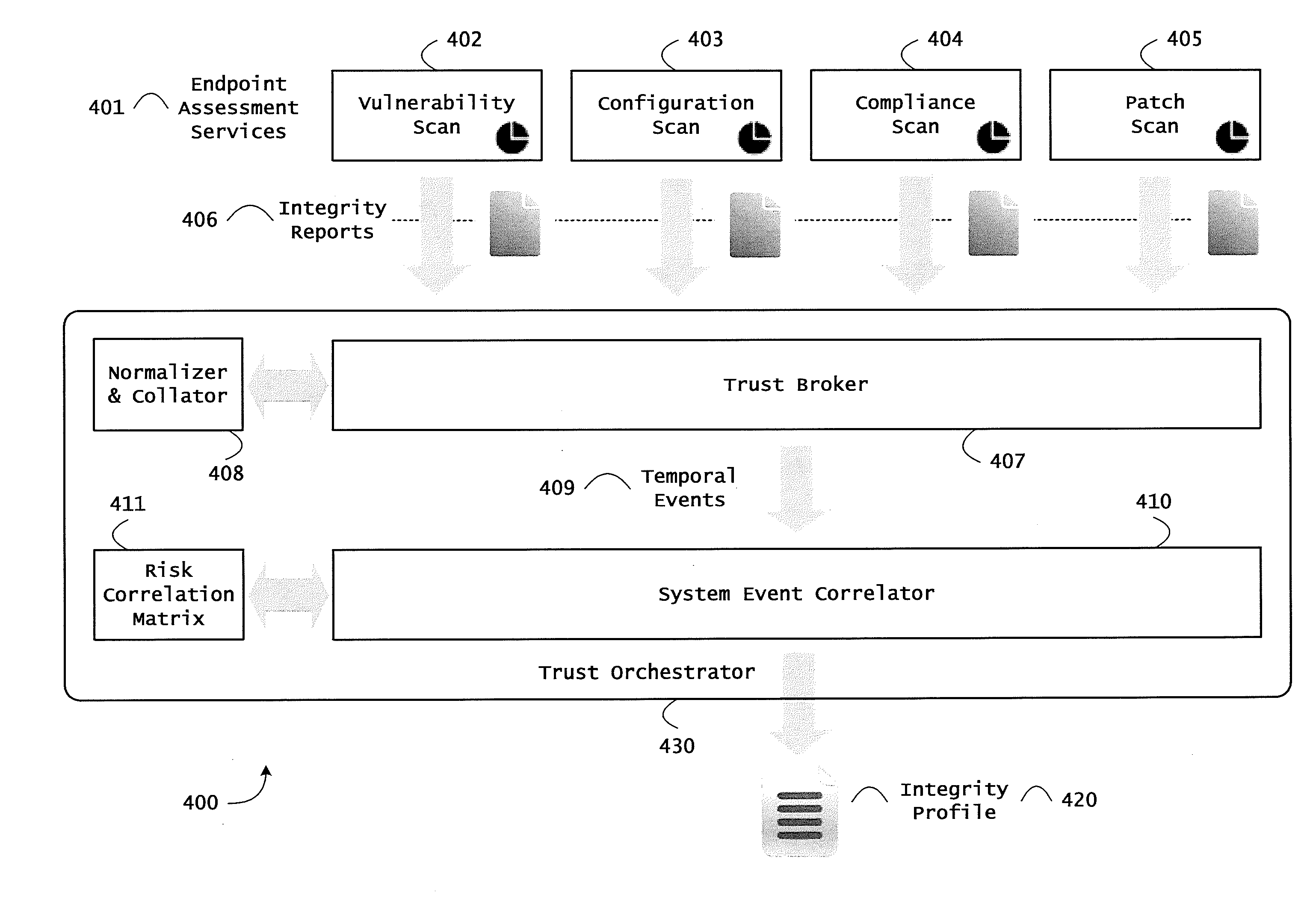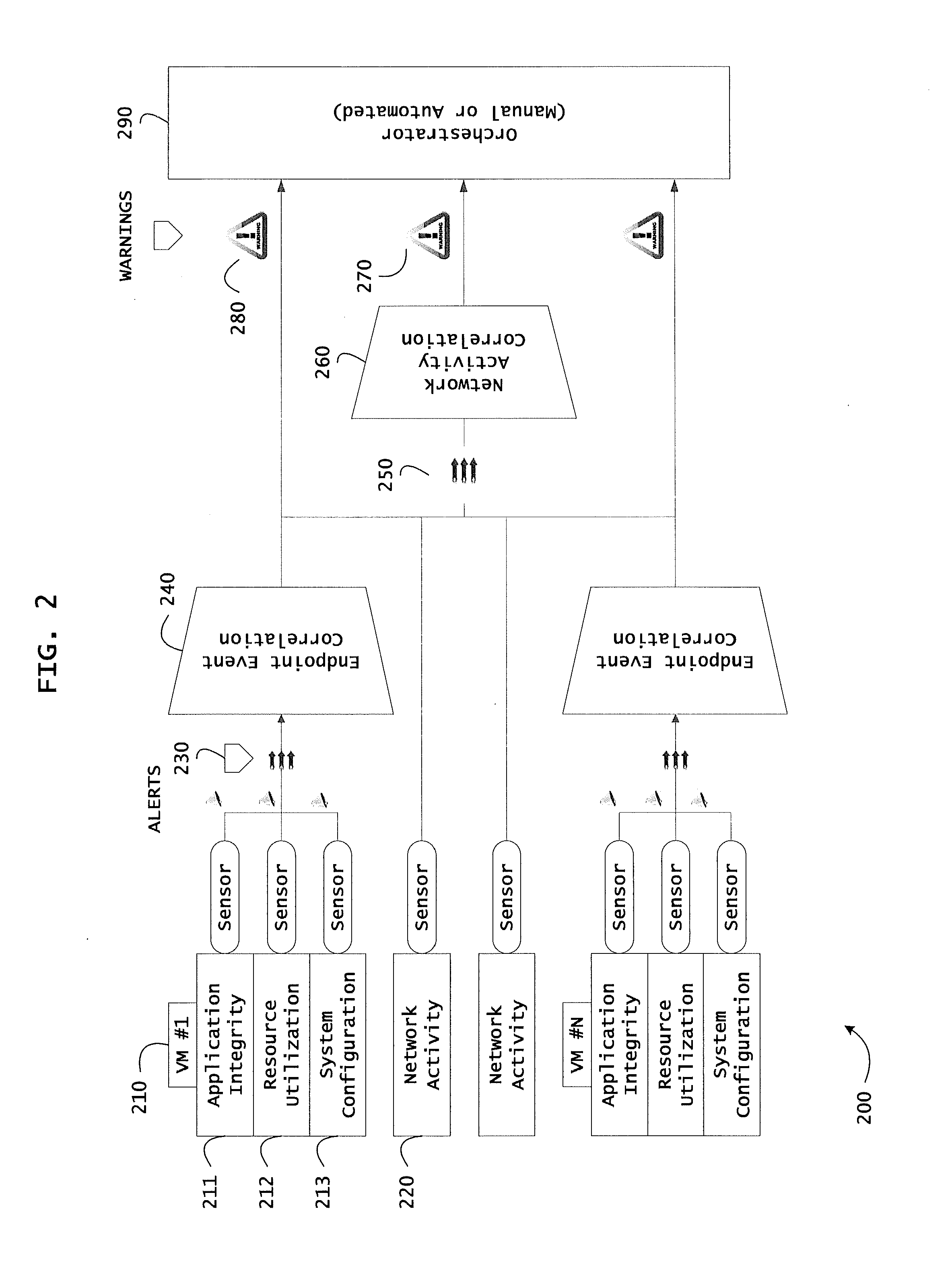Systems and methods for network flow remediation based on risk correlation
a network flow and risk correlation technology, applied in error detection/correction, unauthorized memory use protection, instruments, etc., can solve problems such as inability to offer any level of remediation, and inability to protect systems
- Summary
- Abstract
- Description
- Claims
- Application Information
AI Technical Summary
Benefits of technology
Problems solved by technology
Method used
Image
Examples
example trust
Orchestration Architecture
[0138]FIG. 8 is a block diagram of an exemplary architecture 800 for trust orchestration including a trust orchestrator 430, a network analyzer 830, and a device 560. The architecture 800 can be used to correlate a plurality of events for determining runtime operational integrity of a system. FIG. 8 is described with continued reference to the embodiments illustrated in FIGS. 4, 5, and 7C and with reference to FIGS. 12 and 13. However, FIG. 8 is not limited to those embodiments.
[0139]As shown in FIG. 8, the trust orchestration architecture 800 may include an endpoint trust agent 510 on a device 560, a network analyzer 830 that may include a network activity correlator 831, an endpoint assessment service 820, a service provider for orchestration and / or policy enforcement point services 860, and a trust orchestrator 430 that may include a trust broker 407, a system event correlator 410, a trust supervisor 846, and a remediation controller 848.
Trust Orchestrat...
PUM
 Login to View More
Login to View More Abstract
Description
Claims
Application Information
 Login to View More
Login to View More - R&D
- Intellectual Property
- Life Sciences
- Materials
- Tech Scout
- Unparalleled Data Quality
- Higher Quality Content
- 60% Fewer Hallucinations
Browse by: Latest US Patents, China's latest patents, Technical Efficacy Thesaurus, Application Domain, Technology Topic, Popular Technical Reports.
© 2025 PatSnap. All rights reserved.Legal|Privacy policy|Modern Slavery Act Transparency Statement|Sitemap|About US| Contact US: help@patsnap.com



